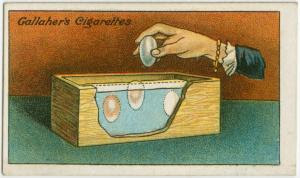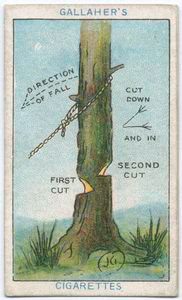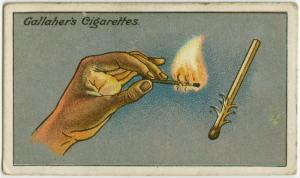There’s nothing new about New Year’s. Festivals marking the beginning of the calendar have existed for millennia, and a few are still actively observed by millions of people around the world. Get the facts on the ways 5 ancient civilizations rang in the New Year.These early New Year’s celebrations often had important social, political and religious implications, but in some cultures the holiday traditions were not so different from the champagne, parties and fireworks of today. Get the facts on the ways 5 ancient civilizations rang in the New Year.
1. Babylonian Akitu
Following the first new moon after the vernal equinox in late March, the Babylonians of ancient Mesopotamia would honor the rebirth of the natural world with a multi-day festival called Akitu. This early New Year’s celebration dates back to around 2000 B.C., and is believed to have been deeply intertwined with religion and mythology. During the Akitu, statues of the gods were paraded through the city streets, and rites were enacted to symbolize their victory over the forces of chaos. Through these rituals the Babylonians believed the world was symbolically cleansed and recreated by the gods in preparation for the new year and the return of spring.
One fascinating aspect of the Akitu involved a kind of ritual humiliation endured by the Babylonian king. This peculiar tradition saw the king brought before a statue of the god Marduk, stripped of his royal regalia and forced to swear that he had led the city with honor. A high priest would then slap the monarch and drag him by his ears in the hope of making him cry. If royal tears were shed, it was seen as a sign that Marduk was satisfied and had symbolically extended the king’s rule. Some historians have since argued that these political elements suggest the Akitu was used by the monarchy as a tool for reaffirming the king’s divine power over his people.
2. Ancient Roman Celebration of Janus
The Roman New Year also originally corresponded with the vernal equinox, but years of tampering with the solar calendar eventually saw the holiday established on its more familiar date of January 1. For the Romans, the month of January carried a special significance. Its name was derived from the two-faced deity Janus, the god of change and beginnings. Janus was seen as symbolically looking back at the old and ahead to the new, and this idea became tied to the concept of transition from one year to the next.
Romans would celebrate January 1 by giving offerings to Janus in the hope of gaining good fortune for the new year. This day was seen as setting the stage for the next twelve months, and it was common for friends and neighbors to make a positive start to the year by exchanging well wishes and gifts of figs and honey with one another. According to the poet Ovid, most Romans also chose to work for at least part of New Year’s Day, as idleness was seen as a bad omen for the rest of the year.
3. Ancient Egyptian Wepet Renpet
Ancient Egyptian culture was closely tied to the Nile River, and it appears their New Year corresponded with its annual flood. According the Roman writer Censorinus, the Egyptian New Year was predicted when Sirius—the brightest star in the night sky—first became visible after a 70-day absence. Better known as a heliacal rising, this phenomenon typically occurred in mid-July just before the annual inundation of the Nile River, which helped ensure that farmlands remained fertile for the coming year. Egyptians celebrated this new beginning with a festival known as Wepet Renpet, which means “opening of the year.” The New Year was seen as a time of rebirth and rejuvenation, and it was honored with feasts and special religious rites.
Not unlike many people today, the Egyptians may have also used this as an excuse for getting a bit tipsy. Recent discoveries at the Temple of Mut show that during the reign of Hatshepsut the first month of the year played host to a “Festival of Drunkenness.” This massive party was tied to the myth of Sekhmet, a war goddess who had planned to kill all of humanity until the sun god Ra tricked her into drinking herself unconscious. In honor of mankind’s salvation, the Egyptians would celebrate with music, sex, revelry and—perhaps most important of all—copious amounts of beer.
4. Chinese New Year
One of the oldest traditions still celebrated today is Chinese New Year, which is believed to have originated over 3,000 years ago during the Shang Dynasty. The holiday began as a way of celebrating the new beginnings of the spring planting season, but it later became entangled with myth and legend. According to one popular tale, there was once a bloodthirsty creature called Nian—now the Chinese word for “year”—that preyed on villages every New Year. In order to frighten the hungry beast, the villagers took to decorating their homes with red trimmings, burning bamboo and making loud noises. The ruse worked, and the bright colors and lights associated with scaring off Nian eventually became integrated into the celebration.
Festivities traditionally last 15 days and tend to center on the home and the family. People clean their houses to rid them of bad luck, and some repay old debts as a way of settling the previous year’s affairs. In order to encourage an auspicious start to the year they also decorate their doors with paper scrolls and gather with relatives for a feast. Following the invention of gunpowder in the 10th century, the Chinese were also the first to ring in the New Year with fireworks. Since Chinese New Year is still based on a lunar calendar that dates back to the second millennium BC, the holiday typically falls in late January or early February on the second new moon after the winter solstice. Each year is associated with one of 12 zodiacal animals: the rat, ox, tiger, rabbit, dragon, snake, horse, goat, monkey, rooster, dog and pig.
5. Nowruz
While it is still celebrated in Iran and other parts of the Middle East and Asia, the roots of Nowruz (or “New Day”) reach far back into antiquity. Often called the “Persian New Year,” this 13-day spring festival falls on or around the vernal equinox in March and is believed to have originated in modern day Iran as part of the Zoroastrian religion. Official records of Nowruz did not appear until the 2nd century, but most historians believe its celebration dates back at least as far as the 6th century B.C. and the rule of the Achaemenid Empire. Unlike many other ancient Persian festivals, Nowruz persisted as an important holiday even after Iran’s conquest by Alexander the Great in 333 BC and the rise of Islamic rule in the 7th century A.D.
Ancient observances of Nowruz focused on the rebirth that accompanied the return of spring. Monarchs would use the holiday to host lavish banquets, dispense gifts and hold audiences with their subjects. Other traditions included feasts, exchanging presents with family members and neighbors, lighting bonfires, dyeing eggs and sprinkling water to symbolize creation. One unique ritual that arose around the 10th century involved electing a “Nowruzian Ruler”: a commoner who would pretend to be king for several days before being “dethroned” near the end of the festival. Nowruz has evolved considerably over time, but many of its ancient traditions—particularly the use of bonfires and colored eggs—remain a part of the modern holiday, which is observed by an estimated 300 million people each year.



























